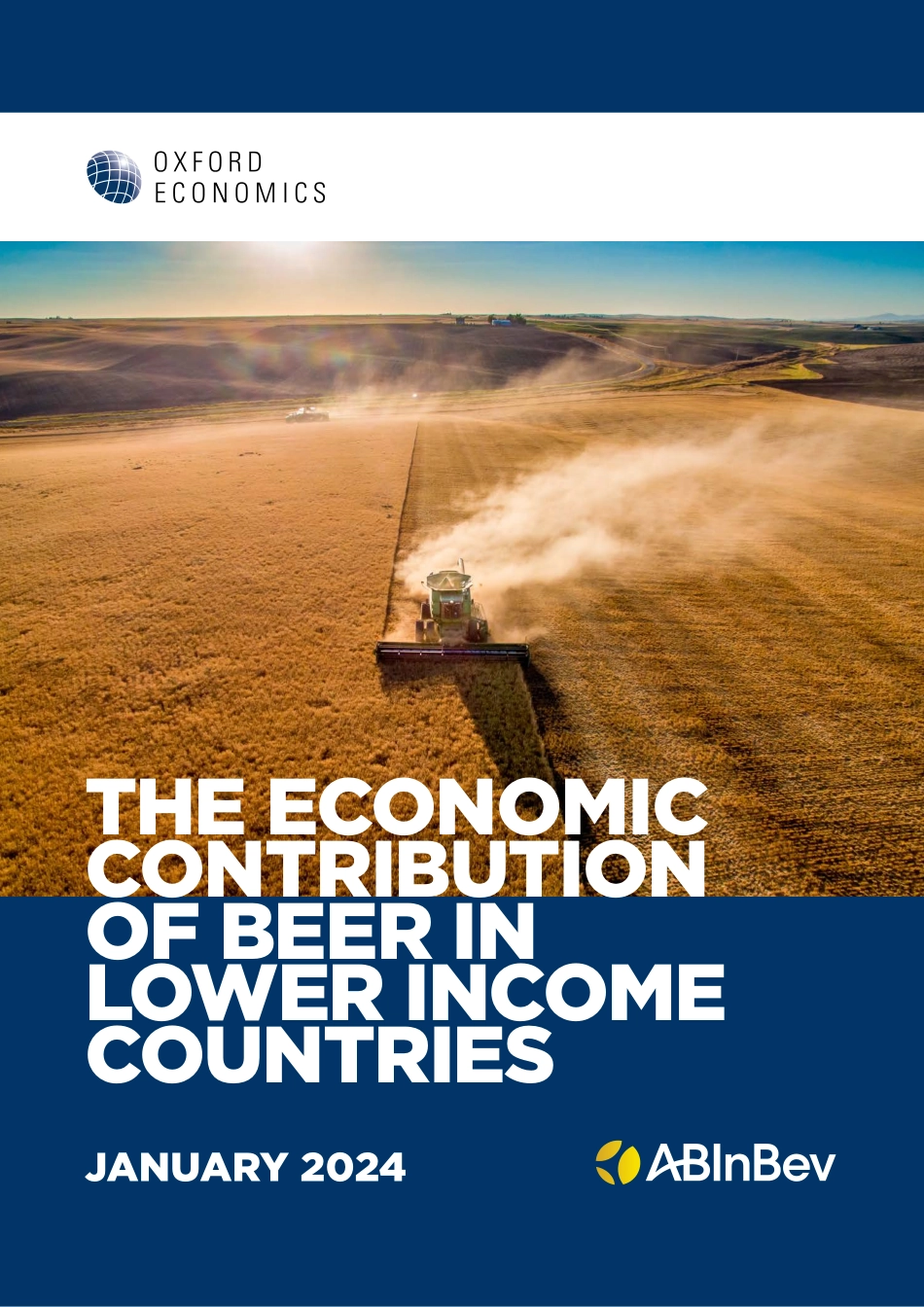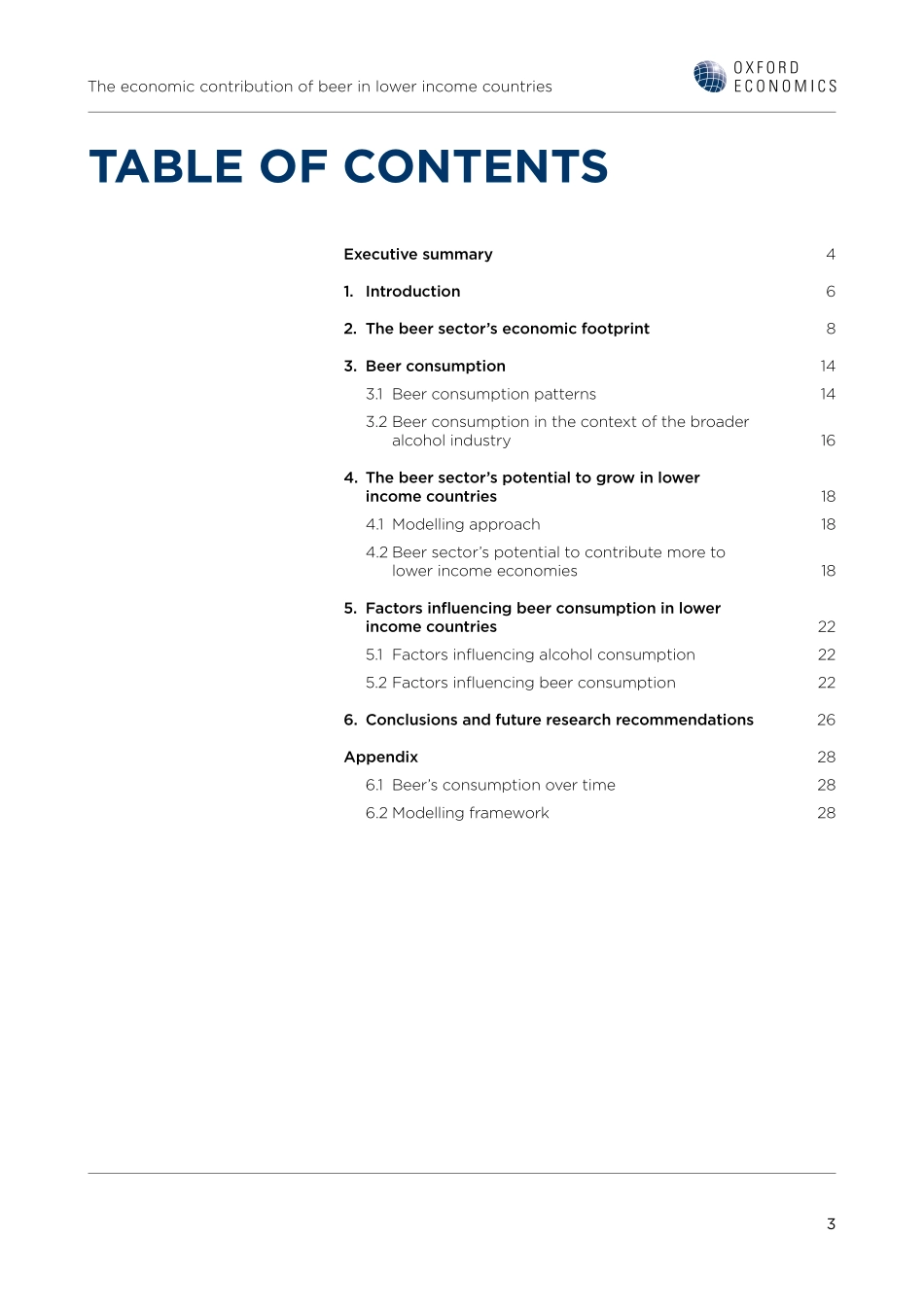JANUARY 2024THE ECONOMIC CONTRIBUTION OF BEER IN LOWER INCOME COUNTRIES2The economic contribution of beer in lower income countries3The economic contribution of beer in lower income countriesTABLE OF CONTENTSExecutive summary 41. Introduction 62. The beer sector’s economic footprint 83. Beer consumption 143.1 Beer consumption patterns 143.2 Beer consumption in the context of the broader alcohol industry 164. The beer sector’s potential to grow in lower income countries 184.1 Modelling approach 184.2 Beer sector’s potential to contribute more to lower income economies 185. Factors influencing beer consumption in lower income countries 225.1 Factors influencing alcohol consumption 225.2 Factors influencing beer consumption 226. Conclusions and future research recommendations 26Appendix 286.1 Beer’s consumption over time 286.2 Modelling framework 284The economic contribution of beer in lower income countries$34 billionThe beer sector’s contribution to GDP in lower income countries. The average contribution to GDP was 1.6% across lower income countries in 2019, compared to 0.9% across high income countries.6.7 million Jobs supported by the beer sector in lower income countries.EXECUTIVE SUMMARYIn 2022, we published a study of the global beer sector’s economic footprint across 70 countries, conducted on behalf of the Worldwide Brewing Alliance using 2019 data. One main finding of our previous study is that the beer sector’s economic significance is substantially larger across lower income economies.In this report, we investigate further the importance of the beer sector in lower income economies. We begin by examining why the beer sector’s economic significance is greater in lower income countries, and then analyse how beer consumption varies across countries. We also explore how these economic contributions could potentially increase further if the share of beer consumption rose, while keeping overall alcoholic beverage consumption level constant. We conclude with recommendations for further studies. The beer sector already supports larger shares of economic value in lower income economies. In 2019, the beer sector’s contribution to GDP averaged 1.6% across lower income countries, almost double its contribution to GDP in high income countries (an average of 0.9% of national GDP). The beer sector in lower income countries also supported more jobs in both absolute and relative terms (an average of 1.4% of national employment versus 1.1% in high income countries), which could be explained by the lower levels of labour productivity and a more prominent role of agriculture in these countries. The beer sector in these countries is also characterised by a less prominent role of the downstream segment (accounting for only 39% of the sector’s gross value added contribution, compared to 62% in high income countries) and a lower level of internationalisation (...


